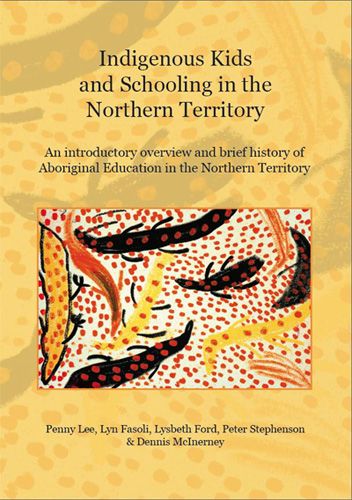Indigenous Kids and Schooling in the Northern Territory
Download the volume free:
• PDF format • EPUB format
This book is for teachers, principals, teacher educators, government administrators and non-government organisations who work with Indigenous people, especially in remoter communities. The book includes a historical overview and provides current demographic information for better understanding of this unique context of schooling. The issue of attendance is examined, as is the fascinating nature of community and individual multilingualism and its relevance to education.
Many Indigenous children start school in the Northern Territory speaking their own languages or dialects, but not the kind of English used at school. In fact, at four or five years of age, many do not speak or understand any kind of English at all, and many continue throughout their school years, and into adult training situations, unable to use the national language confidently and competently. These children and young people, the authors argue, have the same right to specialist English language teaching as is provided to migrant or refugee children. While Australia and Northern Territory government policies may suggest this basic reality is known and accepted, the reality on the ground is that English language teaching by qualified English language specialists is rarely provided in a routine way to all those Indigenous children who need it to cope confidently with the demands of mainstream education.
If Closing the Gap aspirations are to become a reality the English language learning needs of Indigenous learners in the NT and throughout Australia must be thoroughly researched and the challenges squarely faced. The authors emphasise that children's English language proficiency levels need to be professionally assessed and systematically monitored over time to find out how their ability to use school English relates to success in each subject area and, importantly, to NAPLAN success. We simply do not know at this time what levels of English language proficiency are required to achieve National Minimum Standards on NAPLAN tests.
The book explores practical, on-the-ground research areas for immediate attention if government policies and goals are to have an impact at the classroom level. Front and centre are the urgent questions of the degree to which principled English as an Additional Language or Dialect classroom instruction delivered by fully qualified EAL/D specialists can make the same difference to Indigenous students' learning as is so often demonstrated for immigrant and refugee students. Indigenous children in the Northern Territory, often labeled as the most vulnerable in Australia, deserve the very best evidence-based teaching and support that can be provided.
Order the book, or download the volume free:
• PDF format download (4MB)
• EPUB format download (7MB)

